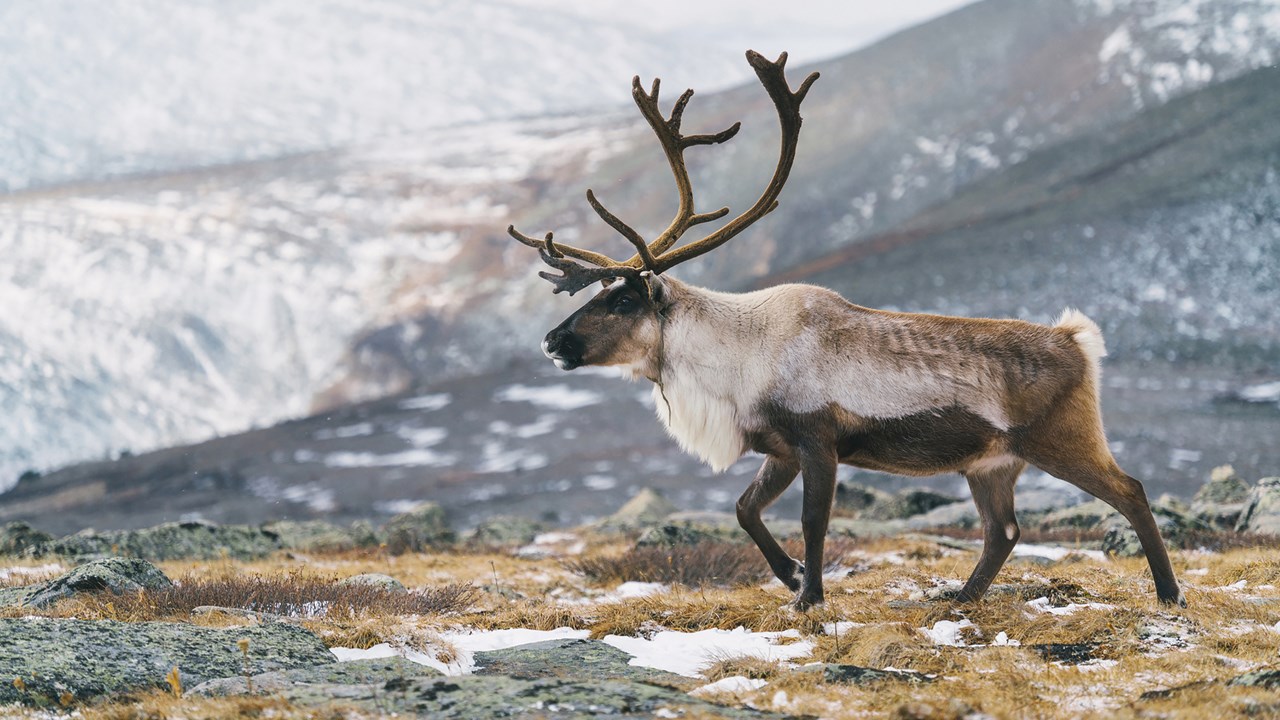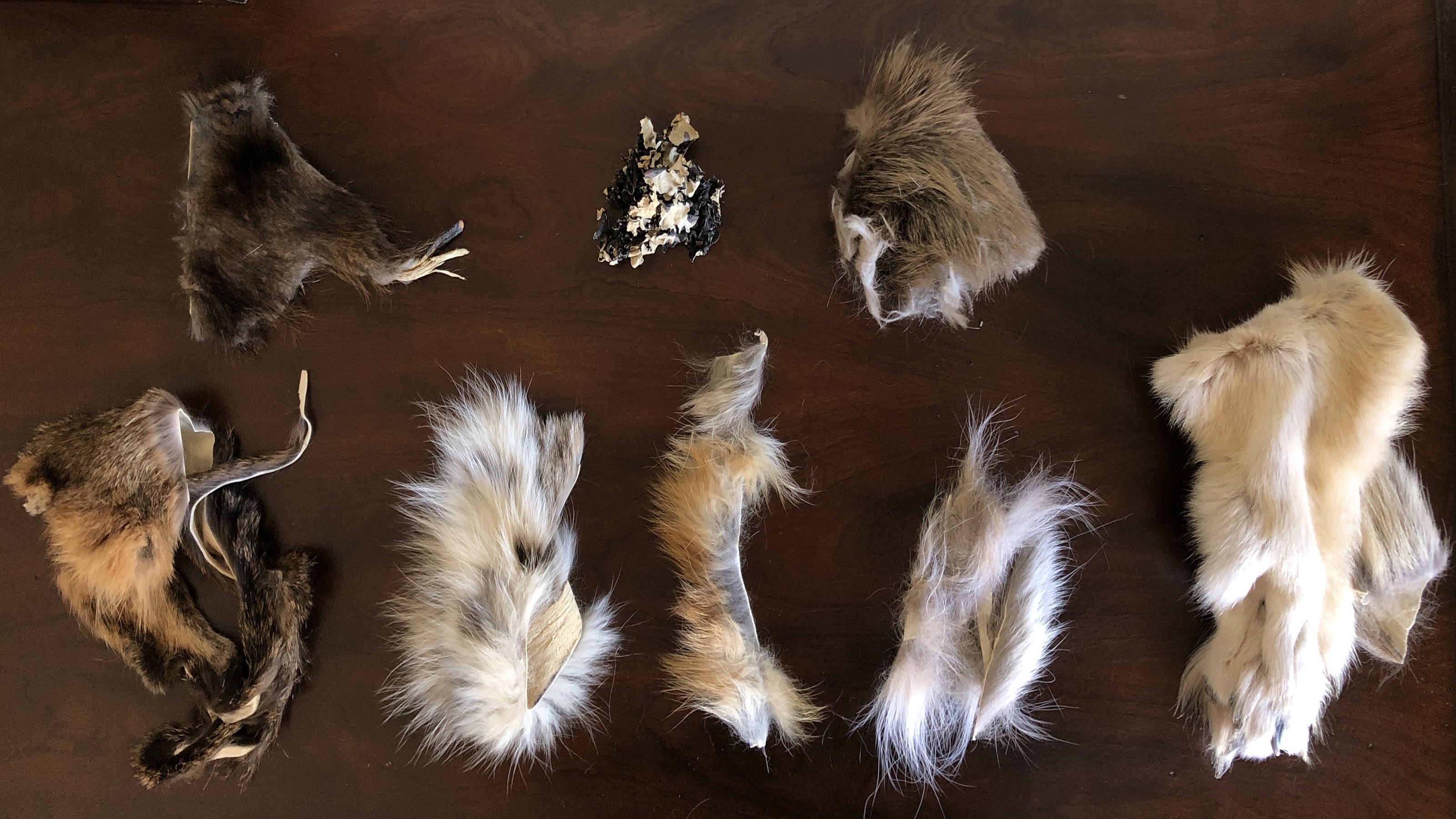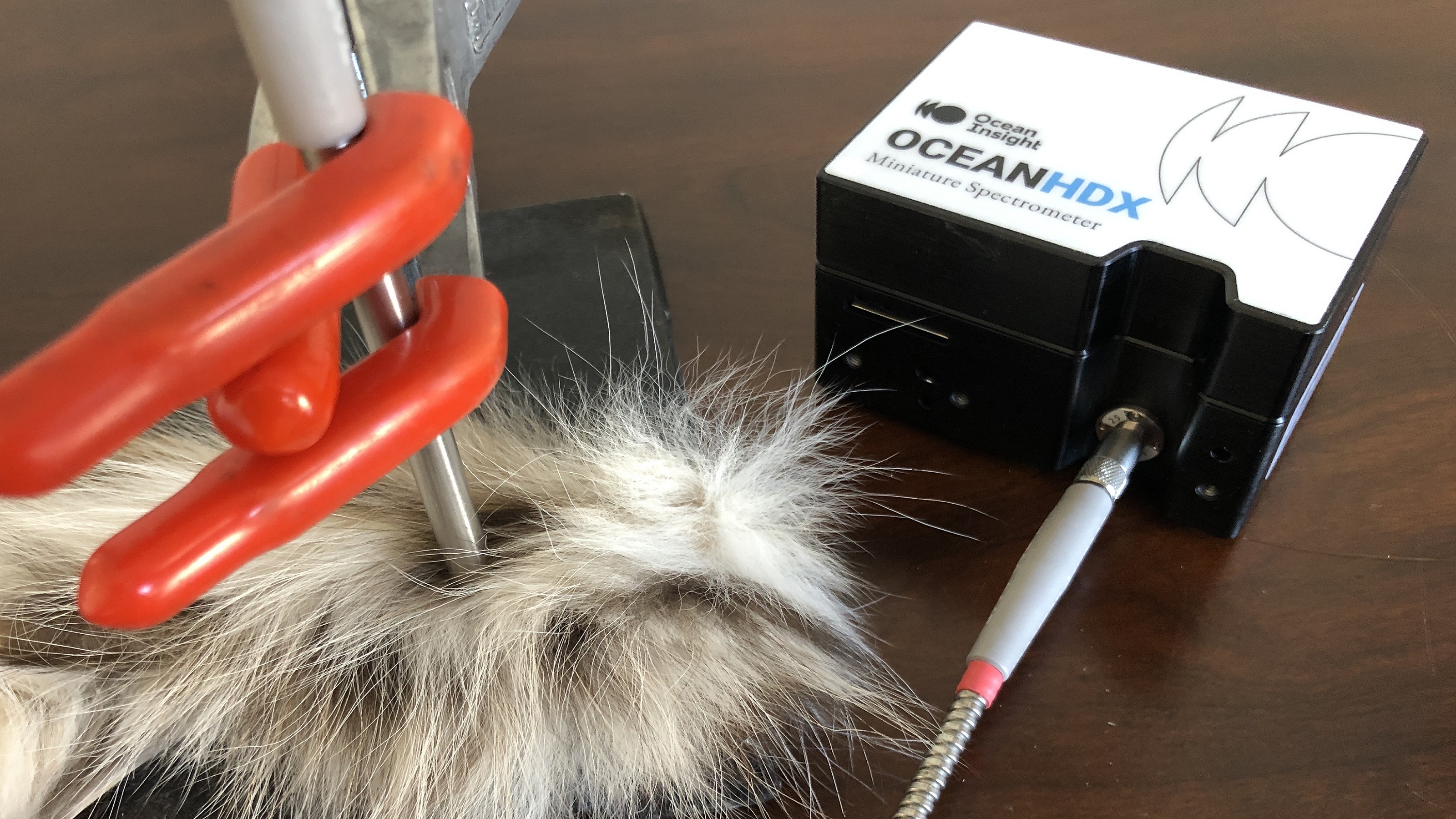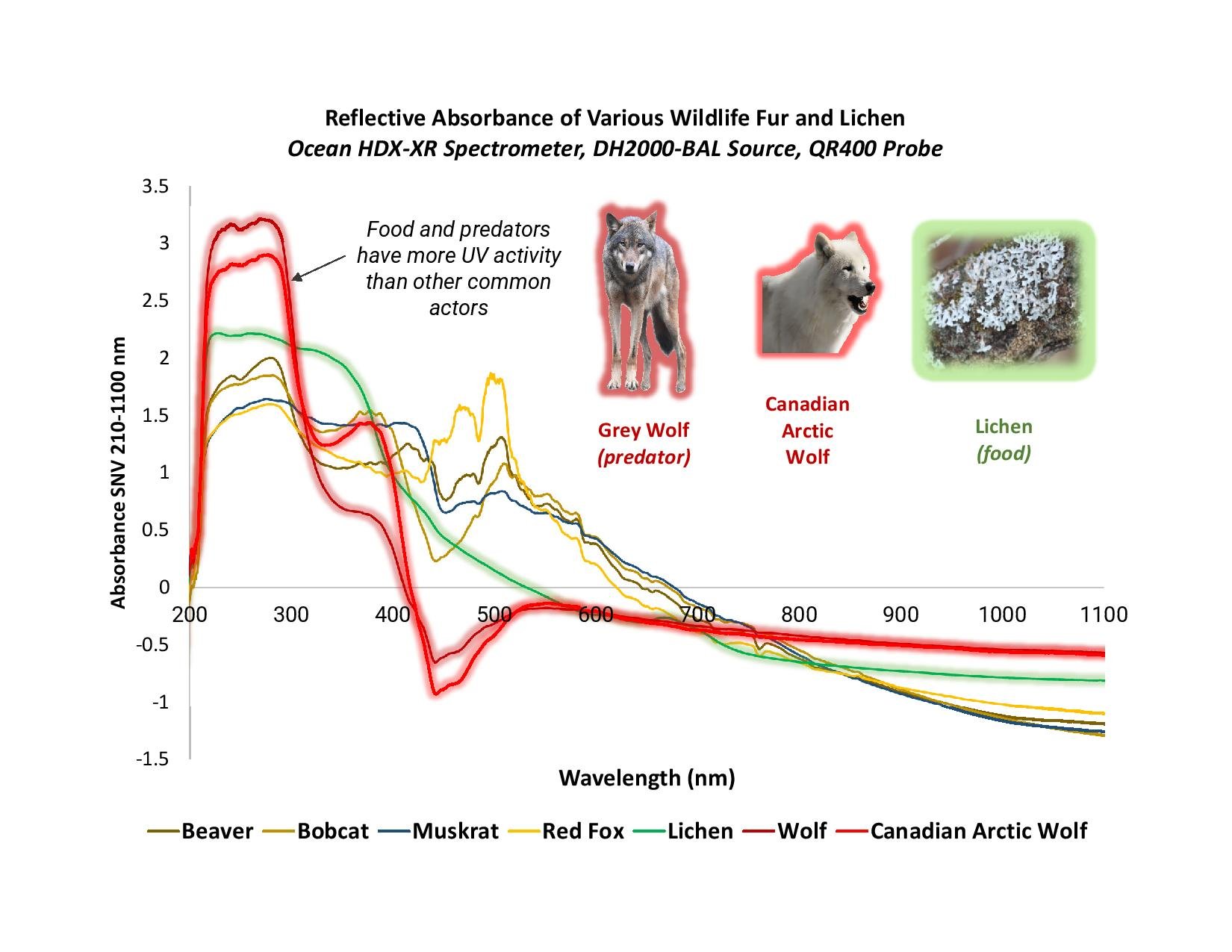Subscribe to Our Blog
Receive updates from our team as we share application notes, customer spotlights, educational tools, spectroscopy how-to’s, and more.

This post originally appeared the week before Christmas 2021. As the application describes, UV vision is key to survival for reindeer. Ocean Optics has worked with many researchers investigating the importance of UV vision in birds, reptiles and other animals.
IMPORTANT: PLEASE REFRESH YOUR BROWSER IF YOU DO NOT SEE ANY IMAGES/SCREENSHOTS/SPECTRA ON THE PAGE.
What do Santa’s reindeer have in common, besides great speed and stamina? In this application note, we use reflection spectroscopy to investigate the UV characteristics of the food and predators that reindeer encounter.
On the evening of December 24, we all know that reindeer will play a critical role in the transportation logistics of billions of holiday gifts distributed around the globe. Without reindeer, no one wakes up to find presents under their tree. But as we recently discovered, we can learn more about the survival of reindeer from spectroscopy than from Santa, both in how reindeer find food and how they avoid becoming food.
Reindeer live in northern parts of Europe, Asia, and North America and love to eat lichen as a favorite food source. Also, reindeer share their territories with many other animals, most of which don’t bother them, although several species of wolf enjoy hunting reindeer as their own favorite food source. So how does a reindeer get by in such a harsh environment, looking for scarce food while avoiding ruthless predators? Well, it turns out reindeer have developed the useful ability to see deeper into the ultraviolet or “UV” region of the light spectrum.
What does UV vision mean for reindeer? To find out, we acquired fur samples from several animals native to the northern regions frequented by reindeer, including two types of wolf and a range of animals non-predatory toward reindeer (Figure 1). We also acquired some lichen samples for similar analysis.*
 Figure 1. We measured samples of lichen (top center) and the coats of both predatory and non-predatory animals that reindeer are likely to encounter.*
Figure 1. We measured samples of lichen (top center) and the coats of both predatory and non-predatory animals that reindeer are likely to encounter.*
Using an Ocean HDX-XR spectrometer (200-1100 nm), DH-2000-BAL broadband deuterium-tungsten halogen source, and QR400 reflection probe (Figure 2), we obtained broadband reflection measurements of the fur and lichen samples to “see” what they would look like to an animal able to differentiate the samples at shorter UV wavelengths. A WS-1 reflectance standard completed the setup.
 Figure 2. The reflection measurement setup comprised an Ocean Insight spectrometer, broadband light source and reflection probe. A diffuse white standard was the reference.
Figure 2. The reflection measurement setup comprised an Ocean Insight spectrometer, broadband light source and reflection probe. A diffuse white standard was the reference.
The reflection measurement was run in absorbance mode to better amplify differences across the broadband spectra, and these trends were further processed through a standard normal variate transformation (SNV) to normalize response. We immediately observed that the reindeer’s predators and food source each have more UV spectral activity than the other animals and food sources they may encounter, which would allow the reindeer to see these figures more clearly against a snowy background (Figure 3).

Figure 3. Both the lichen sample and fur samples of reindeer predators demonstrated strong UV response.
Extra sensitivity into the UV region gives reindeer the leg up they need to find food and dodge hungry wolf packs – useful advantages when gearing up for the holiday season -- and that same UV sensitivity can give you the advantage of seeing parts of your process or impurities in your sample that would otherwise remain hidden.
Consult an Ocean Insight sales engineer today about your application and learn what broadband spectroscopy may uncover for you.
*Note: The lichen was sourced from Josh's Frogs Lichen. The coats were sourced from Moscow Hide & Fur, founded by a Wildlife Biologist. Moscow Hide and Fur and their staff believe in ethical sourcing of their products and responsible management of wildlife as a beautiful and infinitely renewable natural resource. For their detailed policy on ethical sourcing, please visit their website.
Preconfigured Ocean HDX Spectrometers
Options available
Deuterium-Tungsten Halogen Combination Sources are high output, high stability light sources for UV, Visible and NIR applications.
Prices From $4,176.00
Options available
Reflectance standards are available for diffuse or specular reflectance applications. To ensure best results, select a standard with reflectivity comparable to the sample to be measured.
Prices From $468.00
Options available
UV-Visible Reflection/Backscatter Probes
Prices From $713.00

Receive updates from our team as we share application notes, customer spotlights, educational tools, spectroscopy how-to’s, and more.